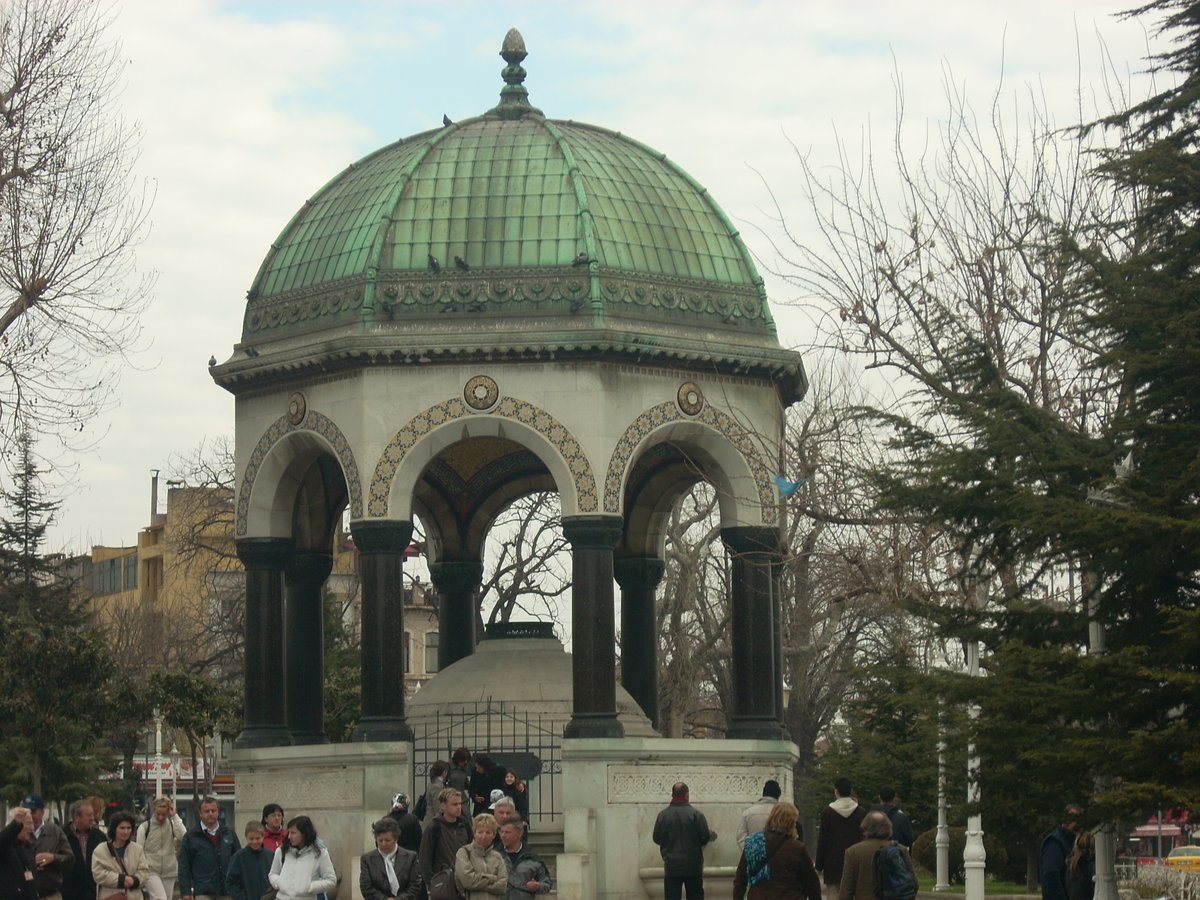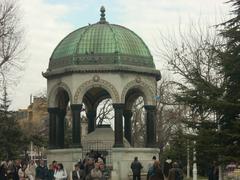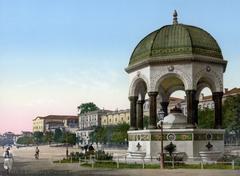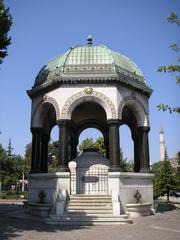
Comprehensive Guide to Visiting Atmeydanı Sokağı, Istanbul, Türkiye
Date: 23/07/2024
Introduction
Atmeydanı Sokağı, situated in the heart of Istanbul, Türkiye, is a captivating blend of ancient history and contemporary vibrancy. This iconic street, known as ‘Horse Square’ in Turkish, offers a rich tapestry of cultural and historical experiences for visitors. Tracing its origins back to the Byzantine era, Atmeydanı Sokağı was initially the site of the Hippodrome of Constantinople, a grand chariot-racing stadium constructed in the early 3rd century AD under Roman Emperor Septimius Severus (Istanbul Clues). The Hippodrome was later expanded by Emperor Constantine the Great and became the epicenter of Byzantine social life, hosting significant events like the Nika Riots of 532 AD (Encyclopaedia Britannica).
With the Ottoman conquest of Constantinople in 1453, the Hippodrome was repurposed for horse-related activities and public ceremonies, becoming an integral part of Ottoman cultural and social life (Istanbul Guide). Today, Atmeydanı Sokağı is part of Istanbul’s historic Sultanahmet district, attracting tourists from around the world and forming a crucial component of the UNESCO World Heritage Site that includes landmarks such as the Blue Mosque and the Hagia Sophia (UNESCO). This guide explores the historical significance, architectural landmarks, and modern-day relevance of Atmeydanı Sokağı, providing essential visitor information and travel tips to enhance your experience.
Table of Contents
- [Introduction](#introductionintroduction)
- [Historical Background](#historical-backgroundhistorical-background)
- [Origins and Early History](#origins-and-early-historyorigins-and-early-history)
- [Byzantine Era Significance](#byzantine-era-significancebyzantine-era-significance)
- [Ottoman Transformation](#ottoman-transformationottoman-transformation)
- [Architectural Landmarks](#architectural-landmarksarchitectural-landmarks)
- [The Obelisk of Theodosius](#the-obelisk-of-theodosiusthe-obelisk-of-theodosius)
- [The Serpent Column](#the-serpent-columnthe-serpent-column)
- [The German Fountain](#the-german-fountainthe-german-fountain)
- [Cultural and Social Evolution](#cultural-and-social-evolutioncultural-and-social-evolution)
- [Modern-Day Significance](#modern-day-significancemodern-day-significance)
- [Visitor Information](#visitor-informationvisitor-information)
- [Visiting Hours and Tickets](#visiting-hours-and-ticketsvisiting-hours-and-tickets)
- [Travel Tips](#travel-tipstravel-tips)
- [Preservation Efforts](#preservation-effortspreservation-efforts)
- [Conclusion](#conclusionconclusion)
- [FAQ](#faqfaq)
Historical Background
Origins and Early History
Atmeydanı Sokağı, translating to ‘Horse Square,’ traces its origins back to the Byzantine era as the Hippodrome of Constantinople. Constructed in the early 3rd century AD by Roman Emperor Septimius Severus and later expanded by Emperor Constantine the Great, the Hippodrome was the epicenter of Byzantine social life, hosting chariot races and political events (Istanbul Clues).
Byzantine Era Significance
During the Byzantine period, the Hippodrome was a political stage, most notably during the Nika Riots of 532 AD. These riots resulted in the deaths of tens of thousands and highlighted the Hippodrome’s central role in Byzantine society (Encyclopaedia Britannica).
Ottoman Transformation
With the Ottoman conquest of Constantinople in 1453, the Hippodrome was repurposed as Atmeydanı for horse-related activities and public ceremonies. This transformation integrated it into the cultural and social life of the Ottoman Empire (Istanbul Guide).
Architectural Landmarks
The Obelisk of Theodosius
The Obelisk of Theodosius, brought from Egypt by Emperor Theodosius I in 390 AD, stands as a testament to the city’s ancient connections.
The Serpent Column
The Serpent Column, originating from the Temple of Apollo at Delphi, commemorates the Greek victory over the Persians at the Battle of Plataea in 479 BC (Istanbul Tourist Information).
The German Fountain
The German Fountain, a gift from German Emperor Wilhelm II to Sultan Abdulhamid II in 1900, symbolizes the diplomatic relations between the Ottoman Empire and Germany. Its neo-Byzantine architecture makes it a significant landmark (Turkey Travel Planner).
Cultural and Social Evolution
Atmeydanı Sokağı evolved from a Byzantine sports arena to an Ottoman social center, reflecting the dynamic nature of Istanbul’s urban landscape. Markets, coffeehouses, and public baths flourished around the area (Istanbul History).
Modern-Day Significance
Today, Atmeydanı Sokağı is part of Istanbul’s historic Sultanahmet district, attracting tourists from around the world. It is part of Sultanahmet Square, which includes landmarks such as the Blue Mosque and the Hagia Sophia, forming a UNESCO World Heritage Site (UNESCO).
Visitor Information
Visiting Hours and Tickets
- Visiting Hours: Atmeydanı Sokağı is accessible 24/7, but specific landmarks like the German Fountain may have restricted hours.
- Tickets: Entry to the street is free, but certain attractions may require tickets.
Travel Tips
- Best Time to Visit: Early mornings or late afternoons to avoid crowds.
- Nearby Attractions: Blue Mosque, Hagia Sophia, and Topkapi Palace.
- Accessibility: The area is generally accessible, but some historical sites may have limited access for those with mobility issues.
Preservation Efforts
Ongoing preservation and restoration efforts by the Turkish government and international organizations ensure that Atmeydanı Sokağı’s historical landmarks remain intact for future generations (Restoration Projects).
Conclusion
Atmeydanı Sokağı is a remarkable testament to Istanbul’s dynamic and multifaceted history. From its inception as the Byzantine Hippodrome, a hub of social and political activity, to its transformation under Ottoman rule, and its current status as a major tourist attraction, this street encapsulates the city’s rich heritage. Visitors can marvel at architectural landmarks such as the Obelisk of Theodosius, the Serpent Column, and the German Fountain, each narrating a unique chapter of the city’s past. The surrounding area, including the Blue Mosque and the Hagia Sophia, further enriches the cultural experience, making Atmeydanı Sokağı an indispensable stop for anyone exploring Istanbul.
FAQ
- What is Atmeydanı Sokağı known for?
- It is known for its historical significance, architectural landmarks, and its transformation from a Byzantine Hippodrome to an Ottoman social center.
- Are there guided tours available?
- Yes, guided tours are available and provide in-depth historical context.
- Can I take photos?
- Yes, it’s a great spot for photography, especially the German Fountain and the Obelisk of Theodosius.
For more travel tips and updates, download our mobile app Audiala, check out other related posts, or follow us on social media.
References
- Istanbul Clues. Hippodrome of Constantinople. Retrieved from https://istanbulclues.com/hippodrome-of-constantinople/
- Encyclopaedia Britannica. Nika Revolt. Retrieved from https://www.britannica.com/event/Nika-revolt
- Istanbul Guide. Atmeydanı Hippodrome. Retrieved from https://istanbul-guide.com/atmeydani-hippodrome/
- UNESCO. Historic Areas of Istanbul. Retrieved from https://whc.unesco.org/en/list/356
- Restoration Projects. Atmeydanı. Retrieved from https://restorationprojects.com/atmeydani
























































































































